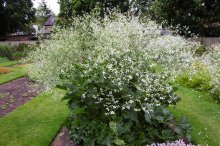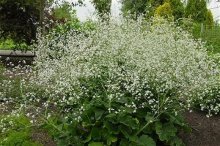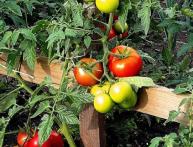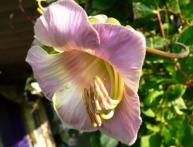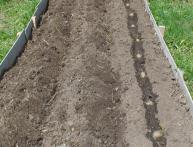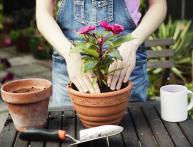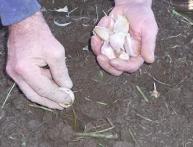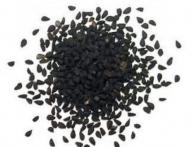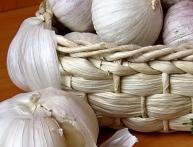Katran - a plant with eastern roots
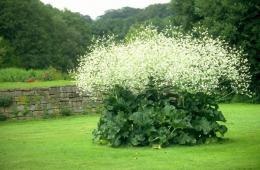
Katran is a plant that is still little known in our country. The exception is the southern regions, where it occurs in the wild. Katran belongs to the cruciferous family and is a distant relative of cabbage. This is a perennial plant, the upper part of which in the coldest regions grows anew every year.
Content
Description and use of the plant
The above-ground part of the plant is a rosette of dark green leaves, above which in summer peduncles up to 80 cm high appear, bearing many small white flowers. Flowering lasts up to three weeks. Katran roots are similar to horseradish roots, but less branched, which allows it not to become a weed on the site.
Mature roots are dark brown. The pulp is white. In its natural form in Russia it is found in the Crimea and the Caucasus. It began to be cultivated in these areas around the middle of the last century. This plant has many species, but only four species are suitable for cultural use:
- Oriental
- twig-like
- nautical
- steppe (Tatar)
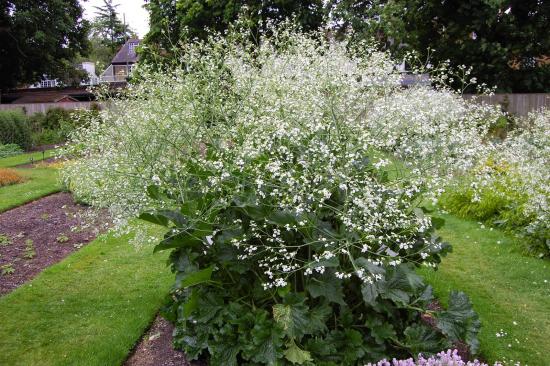
At growing in order to obtain the greatest yield, the twig-like type is practically not used, giving way to three other types.
Application of katran
Another name for this plant - oriental or Tatar horseradish - speaks for itself.In regions where it is common in its natural form, it has long been used as a seasoning for various dishes. It came to Central Russia relatively recently, thanks to enthusiastic gardeners who never tire of looking for new, unknown plants for their plots.
And judging by the reviews, katran has every chance of ousting its main competitor - horseradish. Because, unlike aggressive horseradish, it does not clog the area, but grows into a compact bush. It also produces higher yields with the same care. Plus, katran leaves can be used in various salads as a substitute for asparagus.
In addition to being used for food, this plant has also attracted interest from landscape designers, because starting from the second year of life, it annually produces a whole cloud of small white flowers, which, in combination with a compact bush of green leaves, look very attractive. And they correspond to the fashionable trend of using native inhabitants of garden beds in flower beds or arranging decorative vegetable gardens.
Reproduction of katran
Katran is propagated in two ways: by seeds and vegetatively. The seed propagation method is more labor-intensive, but nowadays it is used more often due to the rarity of the plant in our region. Seeds can be found on sale or collected from an adult plant. A prerequisite for their germination is stratification.
Therefore, they are planted in the ground before winter around October. In order not to lose the katran planting in the garden in the spring, you can plant the seeds in a box and dig it flush with the ground. The seeds can also be planted in the spring, but then they need to be artificially stratified.
To do this, soaked seeds are sown in damp sand and placed in the refrigerator for about three months, keeping the temperature around zero.
After this time seeds begin to germinate. Germination of katran is uneven, so germination can take quite a long time and therefore should not be rushed. Plant one growth at a time as they germinate. It is recommended to plant the plant in the ground after it has 4-5 true leaves.
The plant can be harvested the following year. The vegetative propagation method involves planting root cuttings, just like when propagating horseradish. It is best to take such cuttings in the spring.
The cut pieces of rhizome are planted immediately in a permanent place. Caring for them involves timely loosening and watering. This method of propagation also allows you to get a harvest the following year, and the bush grows even more powerful than with seed propagation.
Growing conditions
Katran is a rather unpretentious plant. Its winter hardiness is high, which allows it to be grown without shelter in almost all regions, excluding the most northern ones. Any soil is suitable for katran, with the exception of very swampy ones. But better results can be achieved by growing this plant in light soils.
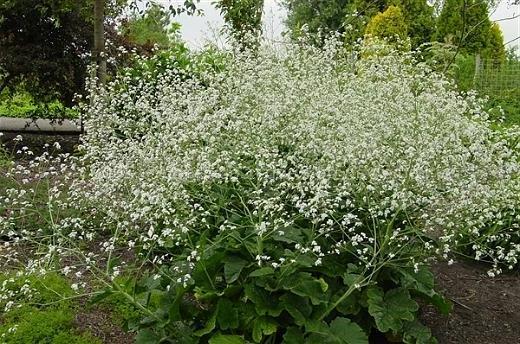
The best predecessors for planting katran are plants of the nightshade family, such as potatoes, tomatoes, and eggplant. This plant can be grown in one place for 5 years, then the bush is transferred to another place. Or, which is preferable, grow a new one.
When planting several katran plants, it is necessary to maintain a distance of 60-70 cm between bushes so that adult plants do not compete for food. This plant needs to be grown in a sunny place, as it does not tolerate shade.
Katran care and preparation
Caring for a katran consists of the following activities:
- weeding
- loosening
- watering
- pest control
Weeding and loosening. Young plantings and seedlings especially need this. Mature plants successfully fight weeds on their own, but it is better not to neglect loosening the soil, especially if the plantings are located on heavy and clayey soils.
Watering. Regular watering is carried out only for young plants. An adult plant easily tolerates drought, which does not in any way affect its commercial qualities. Pest control. The main pest of katran is the cruciferous flea beetle. Control measures similar to those used to control this pest on cabbage are used.
As a rule, roots are harvested from two- and three-year-old bushes, but annual ones can also be used. Just keep in mind that young roots are very poorly stored and quickly wither. Roots from an adult bush can be stored until spring in boxes with sand in the basement. Can also be stored in the refrigerator in the vegetable compartment.
Katran has every chance to take a strong place in the rows in our region due to its unpretentiousness. Its higher commercial qualities compared to damn will allow him to do this with ease.
Video about growing katran:

